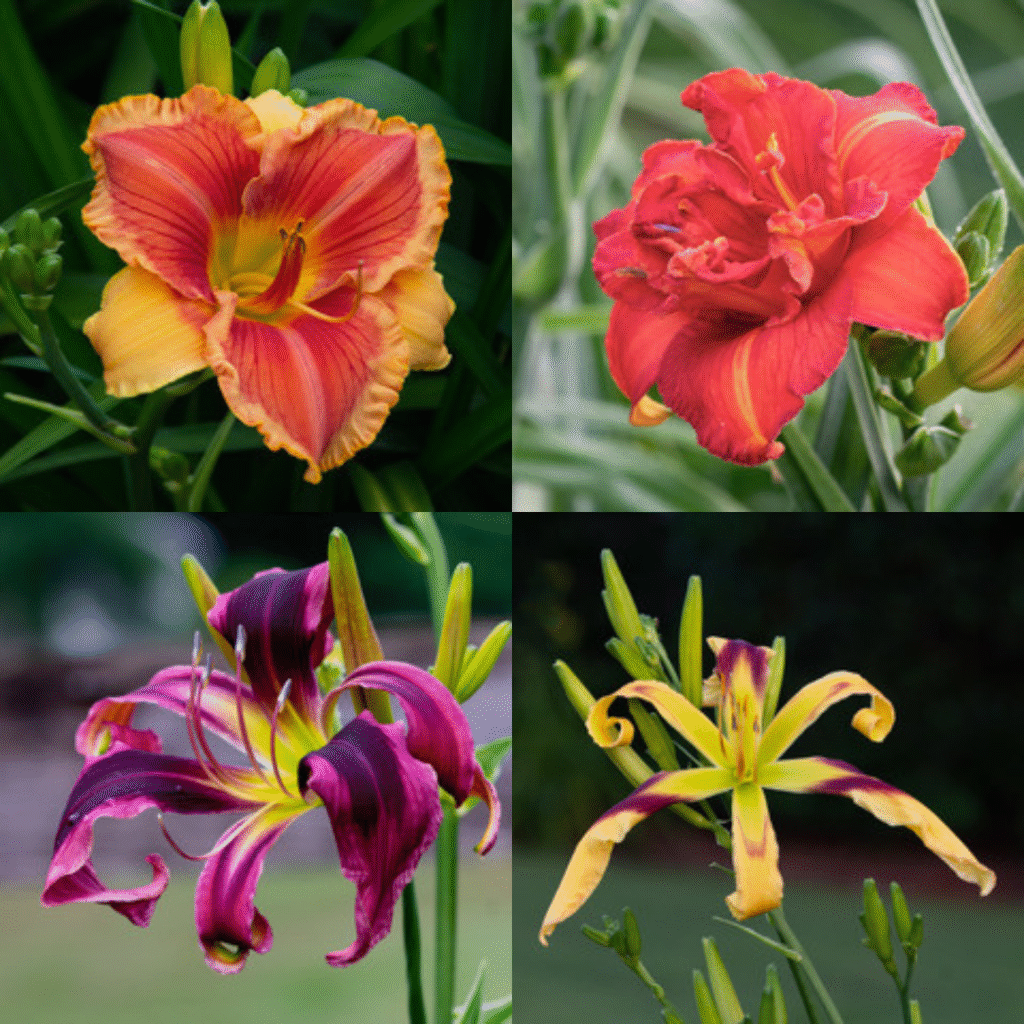by Viki Breeland, Fulton County Master Gardener Extension Volunteer Alumna
Hemerocallis – The botanical name for the daylily. It means “beauty for a day.” Why would anyone want to spend the time and energy to have a plant that only provides beauty for a single day? Well, while the individual bloom lasts for only one day, the stem (also referred to as the scape) on which that bloom was produced has at least a dozen flower buds. Therefore, you’ll have several weeks of beauty from these plants.

Most of us, myself included, grew up thinking that a daylily was that orange flower often seen by the roadside or in a field where an old home once stood. I am delighted to share with you that there are now more than 100,000 registered cultivars available! Number 100,000 was registered last year: ‘Alpenglow Magic’ (Rich, 2024). Visit daylilydatabase.org and click on the name of the cultivar, and you can see the flower and the stats.
There is a type of daylily for every garden enthusiast. If you like large blooms, small blooms or something in between, there is a flower for you. You can have blooms from late May through September here in Zone 8. There are cultivars that are early bloomers, mid-season bloomers and late bloomers. I actually have a very late bloomer, ‘Final Touch’ (Apps, 1991) that blooms from late July through September/October.
Daylilies are hardy plants. They multiply very well and form large clumps. When purchasing a plant from a hybridizer/grower, you normally get two fans (two whole plants). These two fans will become at least three and probably four fans by the next growing season. With each new fan comes the potential for more scapes that provide more buds/blooms. It is very exciting to inspect your plants when they come out of dormancy in the spring. Finding new fans coming out of the soil is a favorite pastime of mine – it is almost as exciting as finding the first scapes as they emerge from the foliage.
Daylilies are also very forgiving. While they really appreciate being fertilized in the early spring and in the fall before being put to bed for the winter, they will still give you lots of beautiful blooms even without regular feeding! The plants are heavy drinkers but will tolerate dry spells. Daylilies prefer full sun, which is a minimum of 6 hours.
After four or five years, your clumps will need to be divided. Here in Zone 8, the best time to dig and divide daylilies is late summer or very early fall. You can amend the hole where you dug the clump, add just a small amount of fertilizer and water, pull some of the soil back into the hole and replant 5-6 of the fans in the “mud.” You can share the extra fans with friends, or if you join the Daylily Society of Greater Atlanta (DSGA), you could contribute the extra fans to the sale at The Duluth Fall Festival.
If my enthusiasm has sparked an interest in daylilies for you, I would like to invite you to visit our annual show and sale, June 14, at Sexton Hall Enrichment Center, 2115 Chloe Road, Cumming, GA 30041 (It faces Sharon Road). The show judging usually wraps up around 11 a.m., and the public can enter the hall to see all the blooms. It is a wonderful experience. Our club members will have plants available for sale. The plants will be tagged with the name of the cultivar, and the prices are beyond reasonable! You can arrive early to shop or shop after you’ve visited the show and you have that irresistible urge to start your own collection. Free admission.
Warning: Daylilies, the addiction is real.
Daylilies are NOT deer resistant. If you do decide to grow them, make sure you spray them regularly with various deer repellents and or have a system in place that keeps deer away from your flower beds.
Happy Gardening!
Learn More
- Why Grow Daylilies? (American Daylily Society)
- Daylily – The Perfect Perennial (Daylily Society of Greater Atlanta)
- Daylily Culture (University of Georgia)
About the Author

This week’s “Garden Buzz” guest columnist is Viki Breeland, a master gardener alumnus who lives in Roswell. Daylilies have become her favorite plants. Viki’s gardening goal is to make her property a place of beauty and relaxation. Her garden is shared with a couple of bunnies, birds and a brown snake (tiny, and its main diet is slugs).